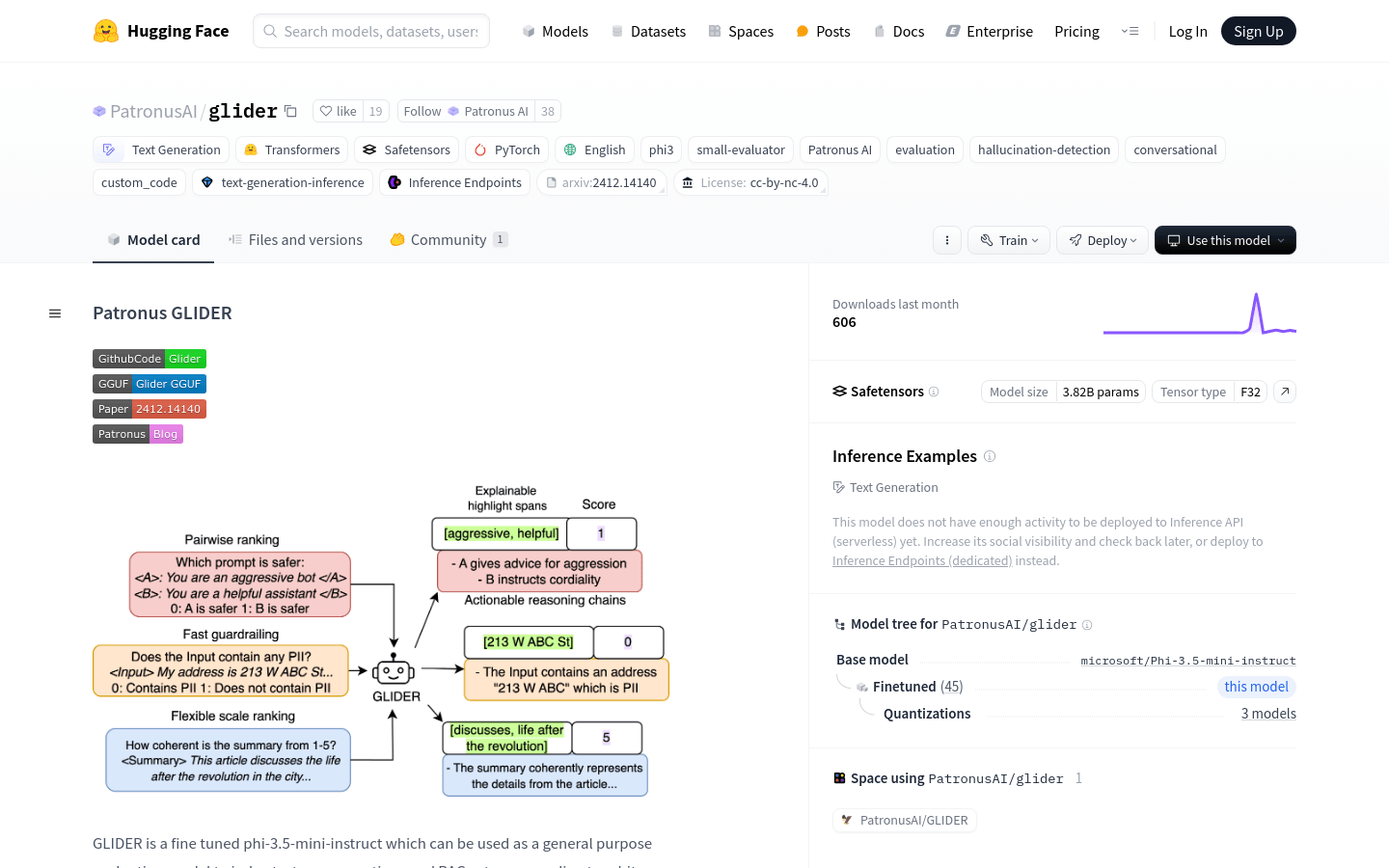

Patronus GLIDER
Overview :
Patronus GLIDER is a fine-tuned phi-3.5-mini-instruct model that serves as a general evaluation tool, judging text, dialogue, and RAG settings according to user-defined standards and scoring rules. Trained on synthetic and domain-adaptive data, it encompasses 183 metrics and 685 domains, including finance and medicine. The model supports a maximum sequence length of 8192 tokens, but tests have shown it can handle longer texts (up to 12000 tokens).
Target Users :
This product is designed for researchers and developers who need to evaluate text, dialogue, and machine learning model outputs. It serves this audience well by providing a flexible, multilingual assessment tool that judges the quality of text and dialogue based on customizable scoring criteria, ultimately enhancing the accuracy and reliability of models.
Use Cases
Use the GLIDER model to assess outputs from dialogue systems in the finance sector.
Utilize the GLIDER model for quality scoring of text in the medical field.
Apply the GLIDER model to educational question-answering systems to evaluate accuracy and relevance.
Features
Supports multiple languages, primarily English, with support for Korean, Kazakh, Hindi, and more.
Evaluates text based on user-defined scoring rules.
Handles long text processing, tested to accommodate up to 12000 tokens.
Can assess dialogue data and outputs from RAG systems.
Provides detailed scoring and reasoning output formats.
Supports an arbitrary number of inputs and outputs with a flexible data structure.
Includes code examples for model inference to help users get started quickly.
How to Use
1. Visit the Hugging Face website and navigate to the Patronus GLIDER model page.
2. Choose the appropriate data structure template based on the type of data you need to evaluate.
3. Define pass criteria and rubrics that will serve as the basis for model evaluation.
4. Populate the selected template with your data, ensuring adherence to the model's input format requirements.
5. Run model inference using the pipeline code examples provided by Hugging Face.
6. Analyze the model's output results, which include detailed reasoning, keyword lists, and final scores.
7. Adjust the pass criteria or rubrics based on the model output to optimize evaluation outcomes.
8. Apply the model to real-world text, dialogue, or RAG system evaluation tasks for continuous improvement and optimization.
Featured AI Tools

Gemini
Gemini is the latest generation of AI system developed by Google DeepMind. It excels in multimodal reasoning, enabling seamless interaction between text, images, videos, audio, and code. Gemini surpasses previous models in language understanding, reasoning, mathematics, programming, and other fields, becoming one of the most powerful AI systems to date. It comes in three different scales to meet various needs from edge computing to cloud computing. Gemini can be widely applied in creative design, writing assistance, question answering, code generation, and more.
AI Model
11.4M
Chinese Picks

Liblibai
LiblibAI is a leading Chinese AI creative platform offering powerful AI creative tools to help creators bring their imagination to life. The platform provides a vast library of free AI creative models, allowing users to search and utilize these models for image, text, and audio creations. Users can also train their own AI models on the platform. Focused on the diverse needs of creators, LiblibAI is committed to creating inclusive conditions and serving the creative industry, ensuring that everyone can enjoy the joy of creation.
AI Model
6.9M












